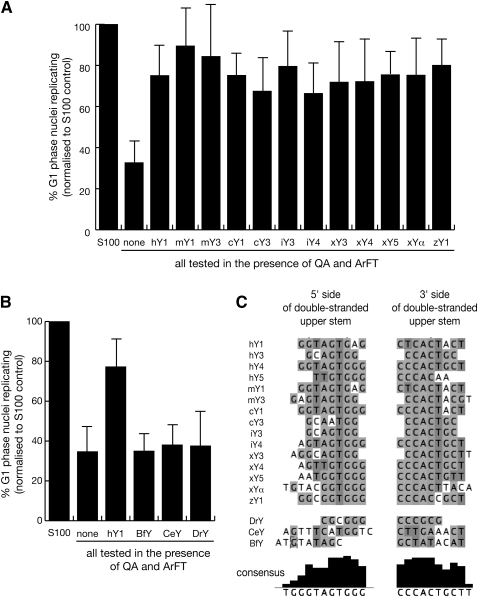FIGURE 2.
Evolutionary conservation of Y RNA function. (A) Vertebrate Y RNAs can substitute for human Y RNAs to initiate chromosomal DNA replication in a human cell-free system. Template nuclei from late G1-phase human cells were incubated with protein fractions QA and ArFT in the presence of 55 nM of the indicated Y RNA. Proportions of replicating nuclei were determined by immunofluorescence microscopy; mean values and standard deviations are shown for each experiment. (B) Nonvertebrate Y RNAs do not support chromosomal DNA replication in this human cell-free system. Nucleotide sequences and predicted structures of these Y RNAs are detailed in Supplemental Figures S1 and S2. Statistical parameters are detailed in Supplemental Table 1. (C) Nucleotide sequence conservation of the upper stem in vertebrate, but not in nonvertebrate Y RNAs. Nucleotide sequences for the 5′ and 3′ sides of the double-stranded upper stem for each vertebrate and nonvertebrate Y RNA were manually selected from the structural predictions made by the Mfold algorithm (see Supplemental Figs. S1,S2). Only sequences of Y RNAs for which functional data are available were considered. These short sequences were aligned by the Kalign algorithm, and displayed in Jalview. Nucleotides are shown in genomic DNA code.

